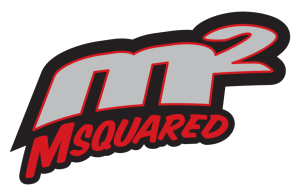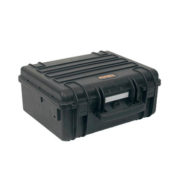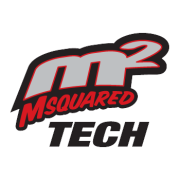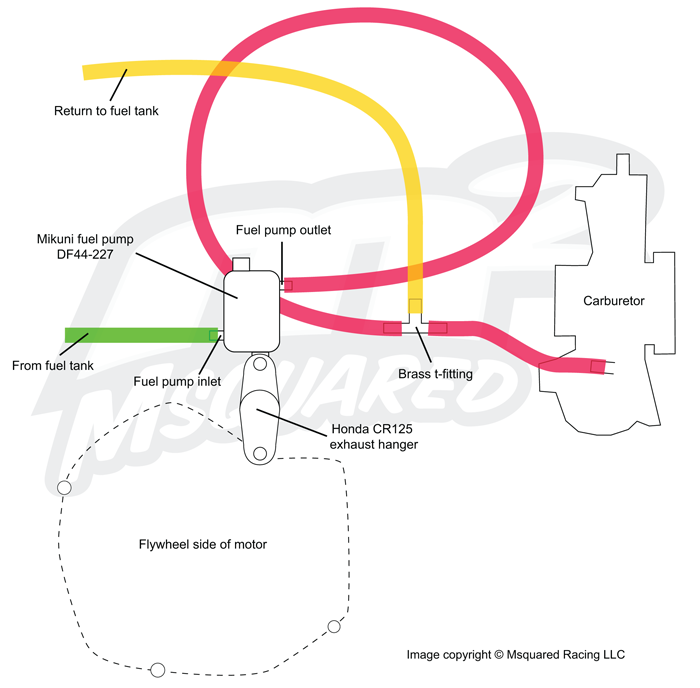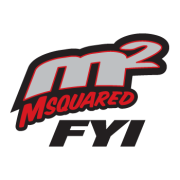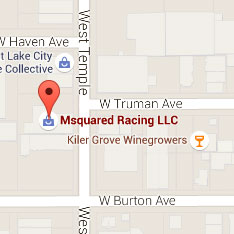*Authors Note* I originally wrote this article in early 2001 and made it available on the first Msquared website. At the time, Msquared carried only one brand of kart, Tony Kart. I wrote it because over the years, so many people had asked me how to go about buying a kart and I wanted to do something to help people avoid making mistakes that could sour them on the sport.
A Primer on Buying a New (or Used) Kart -by Bonnier Moulton
originally published, January 9th 2002 on eKartingnews
When looking to purchase a new kart, buyers are faced with the most important decision they will make relating to their racing enjoyment and success. There are many pitfalls which if not avoided will cost a lot of money, limit the potential for racing success and seriously hamper enjoyment of a very great sport. Over the years I’ve seen more people quit karting due to a bad or uneducated buying decision than for any other reason. So I decided to write this article to share my experience and help other enthusiasts (hopefully) avoid the mistakes that I’ve seen so many people make. My goal here is not to sell anyone a kart, but to help others make informed and educated decisions which will greatly improve their chances of success on the track, while also saving money and deriving the maximum amount of pleasure from karting.
The key to making a good buying decision is research. It’s critical to take the time to investigate a number of key items before buying any kart. There are a number of good resources available for doing research. If you’re reading this, you have already discovered the best resource…the internet. Using the internet you can examine websites for different shops, manufacturers and visit forums to ask questions. However, you should always be careful with what you read on the internet. Just because it’s on the internet doesn’t mean it’s necessarily true. There are countless karting “experts” on the internet. Some are knowledgeable, some are clueless and some have an agenda. Seek consensus whenever possible. Okay, let’s go over the areas you should research in detail, and discuss what you should look for and what you should look out for.
Where and what:
The first decision you need to make is where are you going to race and what class are you going to race in. I’m not going to tell you what class to begin in, that is a decision that can only be made by you based on your budget, skill (driving and mechanical) and interest. I will say this, however; approach this decision with a great deal of objectivity. Do not fall into the trap of overestimating your skill. I’ve seen many, many people jump in over their heads and quit karting as a result. My advice is to find the track you wish to race at and go to a few races. Try and determine what class(es) are well supported and look interesting to you. Don’t be afraid to ask racers questions. See if someone will let you drive their kart. Most racers will be more than happy to talk to you and give you their opinions, fewer will be willing to let you test-drive their kart. Once you’ve decided upon a track and class you can begin to research the specifics related to purchasing a kart.
Brand and model:
The most obvious decision you will have to make is what brand and model of kart to buy. Whether you are buying new or used, a mistake here can be difficult and expensive to overcome. There are countless manufacturers of karts in the industry today; some good, some not so good. Each manufacturer has a host of different models designed for specific applications. It’s critical that you select a good brand and the appropriate model for your particular application. When several models for the same application are offered from a single manufacturer, be sure to do additional research to determine which model will best fit your needs.
Generally speaking, kart manufacturers can be broken down into two major categories; American and European. Currently, European manufacturers are viewed as superior with several notable exceptions. No, I’m not being unpatriotic, the plain fact is that kart racing is a much bigger sport in Europe than it is here in the United States. As a result, the European manufacturers have more experience and markedly more resources to devote to research and development and production than their American counterparts. They also have a very structured, rigidly controlled and very competitive arena in which to test their products against one another, something we sadly lack here in the U.S.
European manufacturers:
The European manufacturers are primarily based in Italy and can be divided into The Big Three and The Rest. The Big Three are the dominant forces in karting in the world today; they have the most resources, the largest production facilities and as a rule are the trendsetters in kart design. These three manufacturers are TonyKart, Birel and CRG. The lion’s share of races in international competition are won by these three brands. Aside from the Big Three, there are countless other European manufacturers, some large and some which can only be considered boutique brands. Quality ranges from excellent to not so good. Many of the smaller European kart manufacturers rely on one of the Big Three to produce their karts to their own specifications.
American Manufacturers:
There are relatively fewer U.S.-built karts on the market today, yet two have proven themselves up to the task of designing and producing karts which meet the lofty standards established by the Big Three. These are Trackmagic and Margay. Both of these companies have wisely avoided trying to reinvent the wheel and have integrated Italian design philosophy into their karts. Trackmagic is a powerhouse in U.S. shifter kart racing while Margay is known primarily for their 100cc equipment.
How to select a brand:
I’m not going to tell you which brand to buy and I’m not going to tell you that one is the best. I am a firm believer that there is no such thing as ‘the best’ brand of kart. Rather, I believe that there is a group of karts which stand out from the rest. It shouldn’t be too difficult to figure out which brands I’m talking about. If you limit yourself to selecting from these brands which I will call ‘The Fast Five,’ you will end up with a very good kart, one that is high-quality in design with high quality components and for which parts and support are readily available. There are other high-quality brands on the market, but for the new karter I recommend the safe approach. Finally, I said this once but it bears repeating, when several models for the same application are offered from a single manufacturer, be sure to do additional research to determine which model will best fit your needs.
What to look out for:
Orphans, boutique brands and oddballs. If you stick to my advice above, you won’t have to worry about these, but if not, here’s what to avoid at all costs. Orphans are karts that have little or no support in the U.S.. This is primarily a concern when buying a used kart. There are many brands which are no longer imported or are imported in very small quantity. These karts can be very difficult to get parts for and even harder to get support for. The same holds true for boutique brands and oddballs. Don’t buy a kart because you want to have something unusual or different. You will regret it and you’ll have a hard time unloading it after you realize your mistake.
Who to buy from:
Easily as important as what you buy is who you buy it from. There are three key issues to consider when choosing who to buy your kart from. Construction of the kart, support, and price. I’ll summarize each issue and then tell you how to select a good shop.
Construction of the kart: A kart, no matter what the brand, is only as good as the people who put it together. This is a plain and simple fact. Constructing a kart from a pile of parts takes experience, knowledge and a lot of little tricks. A hack can take a great chassis, great engine and all the best components and turn it into a pile of junk. Believe me on this one, I see it all the time. You want to select a shop that builds the kart in-house from quality components and who has the knowledge and experience to put the kart together properly. Also worth considering is whether the kart was constructed in-house or on an assembly line. Many shops sell karts that are built somewhere else. They order them complete and avoid the labor of putting them together themselves. If the shop is staffed by hacks, then this is a better alternative than having them put your kart together. But the best alternative is to find a shop that knows what they’re doing and have them build the kart in-house.
Karts built assembly line style typically have the following faults: a) They are built using the cheapest components, not the best components. b) They are built by drones, not by racers. As a result, they usually require some updating to be competitive and suffer from assembly line quality, such as flimsy brackets which break after a few races and construction that is not optimized for competition.
Support: I can’t overstate how important support after the sale is. It’s critical! You want to select a shop that can help you get the most out of your kart. This means a staff that understands how a chassis works, how an engine works and how to tune them for optimum performance. A kart is a deceivingly complex machine and it takes years to develop an understanding of how they work and what steps need to be taken to address a given handling condition. You also want a shop that stocks commonly needed parts for your kart so you never have to miss a race or practice because they couldn’t provide you with what you need.
Price: At the risk of sounding cliche’, you get what you pay for. This overly used phrase holds true when buying a kart. It’s fairly simple to find a bargain priced kart, but in most cases you discover down the road that your great deal wasn’t so great. You may find that the kart you got such a great deal on has poor quality components and after you replace them you’ve spent more than if you would’ve bought the more expensive kart. Or, the craftsmanship is so shoddy that you spend more time replacing broken parts than driving. If you’re budget is tight enough that you can only afford the bargain priced kart, then you should seriously consider looking for a used kart. (A topic I will discuss in-depth later.)
How to select a shop:
Ok, we have an idea of what you want from a shop. But how do you figure out if a given shop has the qualities you’re looking for? It’s not easy… First of all make sure your bulls**t sensor is operating at peak efficiency because you’re going to hear a lot of it. Most shops are going to tell you three things: 1) Their stuff is the best. 2) Everybody else’s stuff is junk. 3) They do all the stuff I outlined above and more. If you take them at face value then I’ve got a bridge you may be interested in. This is where you’re going to have to do some of that research I spoke about earlier. Your best tool here is simple observation. There are some fairly simple methods to determine if a shop meets the criteria I outlined above- let’s go over them.
Step 1 – Watch the staff:
Almost every kart shop is staffed by people who race. These people are one of your best indicators regarding the quality of the shop. If you’re looking at local shops, go out to the track and see how the staff performs, look at their karts and ask them some questions. If their kart is a pile of junk, yours will be too. If they can’t make their kart handle, they won’t be able to help you make yours handle. If their motor is slow and/or runs poorly…well you get the picture.
Step 2 – Watch the customers: If a shop makes it past step 1, then proceed to step 2. Watch how the customers of the shop perform. Are there a lot of them? Are they competitive? Are their karts always falling apart or breaking? Proceed to step 3.
Step 3 – Talk to the customers: Ask them how their experience with the shop in question has been. Would they buy another kart from them or would they go somewhere else? If so, where? Ask them if they are able to get parts when they need them or help with tuning their chassis and engine. Take advantage of these peoples’ experience, be it good or bad. After all, the customer is the window to the soul of the company.
What to look out for: Truly, your best tool for determining if you don’t want to do business with a given shop is your bulls**t sensor. Take my word for it, you don’t want to rely on a shop where the primary means of communication is bulls**t. If it sounds like BS, smells like BS, it’s probably BS. The other key indicator is a shop which slams its competition as a method of promoting itself. I’ve worked in this industry a long time and found this to be an infallible indicator of a shop I don’t want to deal with. A good shop will positively promote itself with its performance and the satisfaction of its customers. A poor shop will generally not have these options and will be reduced to trying to drag the competition down to its level. If you hear the BS, or the shop starts slamming its’ competition, do yourself a favor and take your business elsewhere.
New versus used – What’s right for me?
As with anything, there are pros and cons to both new and used karts. Certainly, a used kart is less money and for those on a tight budget it is the appropriate way to go. However, there is nothing quite like a brand new kart. While it won’t have that new car smell, it will be tight, clean and sweet. Karts do not typically hold their value well, a new kart will lose the majority of its resale value the first time it hits the track. Once it’s been on the track, it becomes a used kart and will fetch used kart prices. However, top brands will hold their resale value longer than lesser brands. Keeping that in mind, here are some advantages/disadvantages to buying a used kart:
Advantages:
– Used karts typically come with some spare parts
– A quality used kart will already have all the bugs worked out
– A used kart has already seen the majority of its $$ depreciation
– A used kart is cheaper than a new one! Disadvantages:
– Many (most) used karts are just that…used. And in many cases they are just plain used up.
– A used kart may be outdated either in terms of chassis, engine, components or all of the above.
– You never really know if a used kart has been bent, broken, blown up, crashed, flipped or all of the above.
– A used kart will typically require some work ($$) to get it ready for next year.
– If a used kart has been raced for a full season, the engine will most likely require a rebuild over the winter.
– A used kart will never be as tight, nice and sweet as a new one.
So when should you buy a used kart or a new kart? Below are some guidelines.
Buy a used kart if:
You are a beginner and just want to give karting a try.
You are on a tight budget.
You want to move up to a higher class but can’t afford new equipment.
You are buying a kart for a child who has never raced before.
Buy a new kart if:
You want the best equipment and budget is not a huge issue.
You are serious about racing and plan to move up to regional or national competition.
You want to move up to a higher class and budget is not a huge issue.
You are buying a replacement kart for a child who is serious about racing.
So, if you’ve decided that a used kart is the way to go for you, what should you look for and what should you look out for? My guidelines for buying a used kart are similar to those we’ve discussed for new karts, with a few important additions. Let’s recap.
What to look for in a used kart:
– A top name brand chassis.
-A quality shop to support that chassis brand.
-The appropriate model for your application.
-Not more than 2-3 years old.
-A nice package of spare parts with the kart
-Model that is the same as the current model (e.g. not a model that is no longer produced.)
-An engine that if blueprinted has been done by a well known, reputable engine builder.
-A kart that has not been abused and has been maintained well.
-No orphans or oddballs.
A few final pointers on buying used karts:
– Never buy a kart sight unseen. At the very least request a photos from different angles (top, bottom, side, etc..)
– A kart that has been raced on a national level will typically have the best stuff, BUT, it will have been driven very hard.
– If you find a used kart that you are interested in, call some dealers that sell that brand and get their feedback.
-This applies to buying new or used karts: If you are on a limited budget, don’t blow the entire wad on the kart, especially if you are just getting into the sport. You will need a host of additional items to go racing such as safety gear, stand, lubes and so forth.
-Always, always, always look at the bottom of a used kart you are considering purchasing. If the frame rails are ground flat or dented, find another kart to buy. Rock chips are fine, but d-shaped frame rails are not!
Final notes:
Hopefully this article will help you make a wise choice when you buy a kart. At the very least, it should provide you with a framework from which to approach the decision making process. Whether you buy new or used, following these guidelines should help you avoid any major catastrophes. Finally, my disclaimers: First, not all kart shops are of the BS variety I described. In fact, the majority of shops are professional, knowledgeable and courteous. But the BS’ers are out there and you owe it to yourself to separate them from the pack before you open your wallet. Second, this article is comprised solely of my opinions. I think they are educated opinions but there will undoubtedly be people out there who disagree.
Good luck!
Bonnier Moulton
Msquared Karting
 Supernationals, I was fortunate enough to demo the new PitKit Lite for the week. I’ve always been a fan of Beta tools, as most experienced kart racers are. After all, they’re Italian, high-quality and very cool looking. But I’ve always been from the “it’s not the tool, it’s the mechanic”, school of thought. So my toolbox is filled with a hodgepodge of Craftsman, Companion and a wide variety of other assorted brands of tools, yes, even including the dreaded Harbor Freight variety. But after a week of using the Beta wrenches and t-handles, I’ve found myself in upgrade mode.
Supernationals, I was fortunate enough to demo the new PitKit Lite for the week. I’ve always been a fan of Beta tools, as most experienced kart racers are. After all, they’re Italian, high-quality and very cool looking. But I’ve always been from the “it’s not the tool, it’s the mechanic”, school of thought. So my toolbox is filled with a hodgepodge of Craftsman, Companion and a wide variety of other assorted brands of tools, yes, even including the dreaded Harbor Freight variety. But after a week of using the Beta wrenches and t-handles, I’ve found myself in upgrade mode.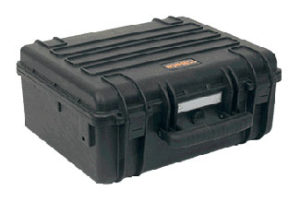 The PitKit Lite starts with a very heavy-duty, rugged, hard-shell Beta case with a manual pressure release valve. This case is very similar to something you might find from Pelican. I’ve had two “similar” boxes since I started working around the country with Rolison Performance Group as a tuner/mechanic. The first, a Harbor Freight version, almost made it through one trip. Actually it almost made it through one plane flight. It came out of the luggage carousel on its’ maiden voyage with tools hanging out the side and my tools had to make the return flight in my suitcase. The second was a Husky version and it fared much better until it came out of the luggage carousel with no handle. It still works, but the handle is now held on by an ingenious structure of zip ties. The Beta box is far sturdier than either of my previous cases.
The PitKit Lite starts with a very heavy-duty, rugged, hard-shell Beta case with a manual pressure release valve. This case is very similar to something you might find from Pelican. I’ve had two “similar” boxes since I started working around the country with Rolison Performance Group as a tuner/mechanic. The first, a Harbor Freight version, almost made it through one trip. Actually it almost made it through one plane flight. It came out of the luggage carousel on its’ maiden voyage with tools hanging out the side and my tools had to make the return flight in my suitcase. The second was a Husky version and it fared much better until it came out of the luggage carousel with no handle. It still works, but the handle is now held on by an ingenious structure of zip ties. The Beta box is far sturdier than either of my previous cases.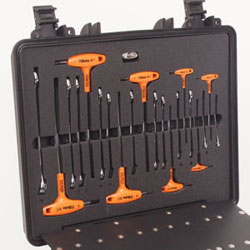 The PitKit Lite comes preloaded with a full set of Beta metric wrenches and even includes two 17mm, two 13mm and two 10mm, which is necessary when working on karts. In addition it includes the iconic Beta t-handle allen wrenches with the orange high-torque handles. Nearly every reputable kart tuner in the paddock at a major event will have these exact t-handles in their box. All of these are fitted into a section of laser-cut, high density foam in the top of the case.
The PitKit Lite comes preloaded with a full set of Beta metric wrenches and even includes two 17mm, two 13mm and two 10mm, which is necessary when working on karts. In addition it includes the iconic Beta t-handle allen wrenches with the orange high-torque handles. Nearly every reputable kart tuner in the paddock at a major event will have these exact t-handles in their box. All of these are fitted into a section of laser-cut, high density foam in the top of the case.